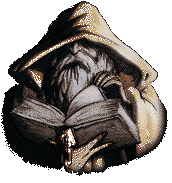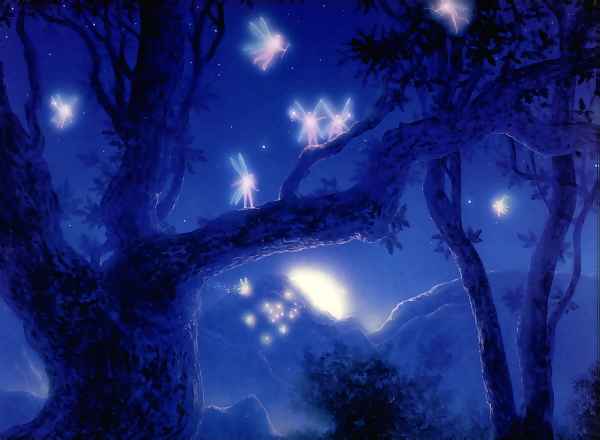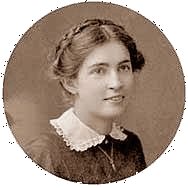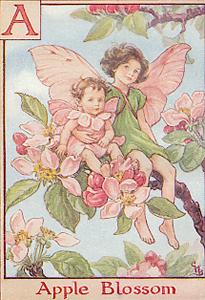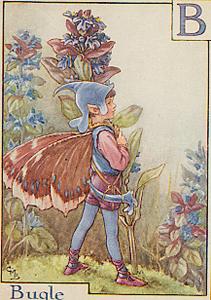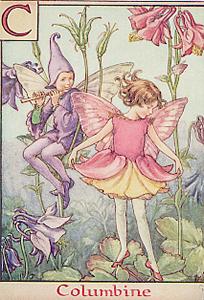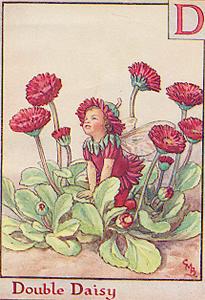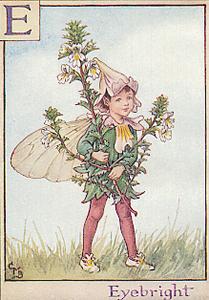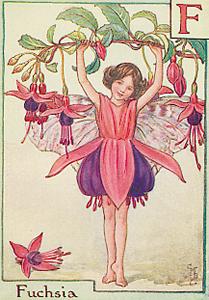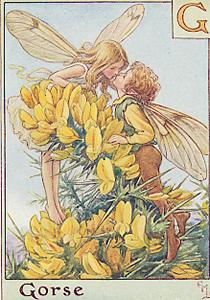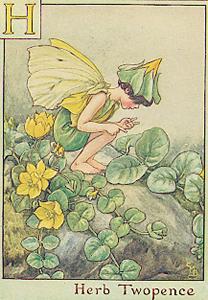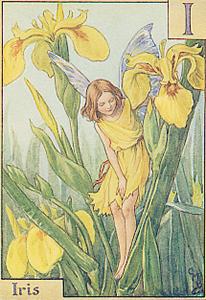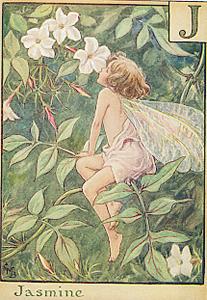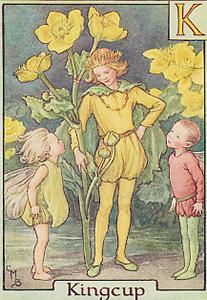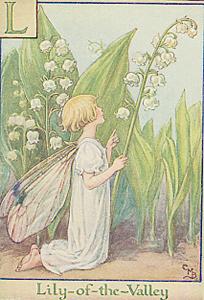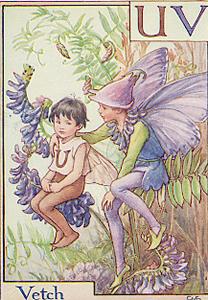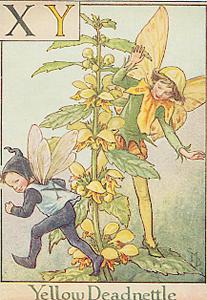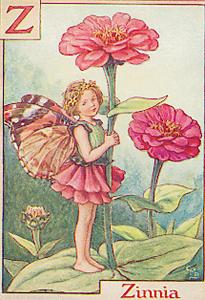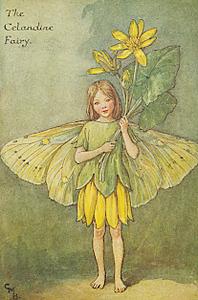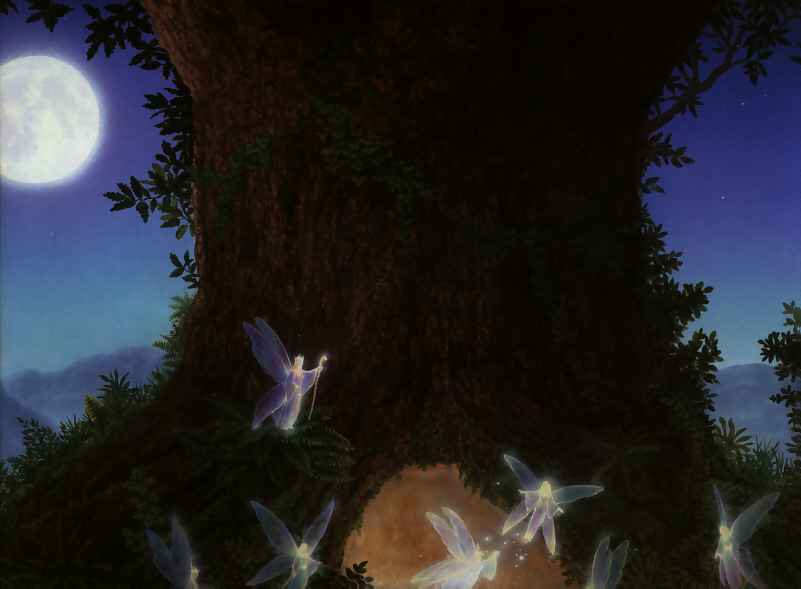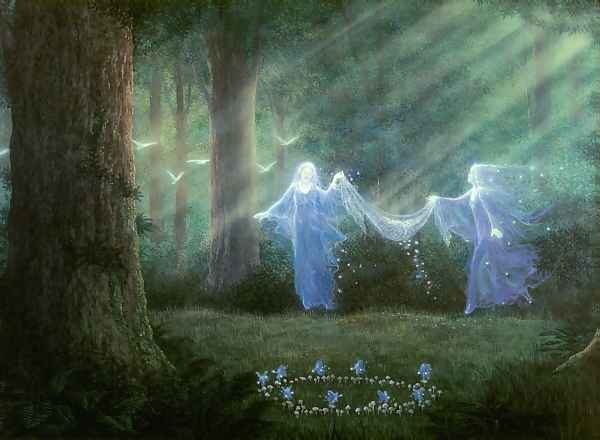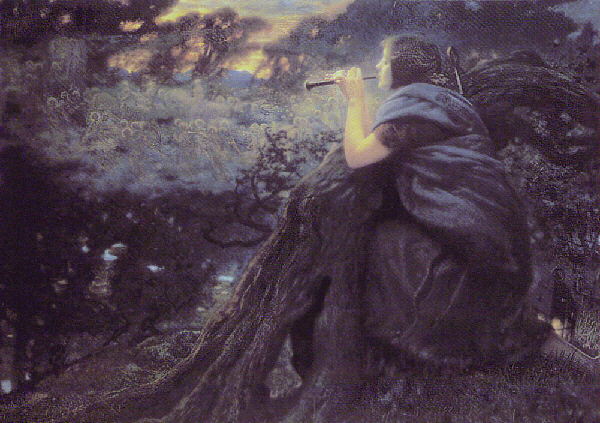|
by Cicely Mary Barker From 1930 to 1950
|
| |
|
Below is a biography of Cicely Barker, I hope you enjoy it with some of her drawings I have placed on this page. The books of Cicely Mary Barker have enjoyed an enduring popularity with adults and children alike. Her pictures of nostalgic children and floral sprites are charmingly delicate in detail and exhibit her Christian morality and understanding of nature. Barker had a special relationship with her father. He was proud of her and fond of calling her "Ciskin". After her father's untimely death in 1912, her older sister, Dorothy, tried to support the family with her small teaching salary. Barker also tried to help by selling poetry and illustrations to magazines such as My Magazine, Child's Own, Leading Strings and Raphael Tuck annuals. Barker is best-known for her "Flower Fairy" series of books. Fairies were a popular topic at this time; Sir Arthur Conan Doyle's book The Coming of the Fairies had been published only the year before and included five photographs of fairies taken by two little girls. The photographs had been declared genuine by an expert only to be proven fakes in the 1980's. Queen Mary was fond of the fairy-themed work of the Australian Ida Rentoul Outhwaite and would send out postcards with her fairy images to her friends. It was also a time when people wanted to escape the harsh realities of progress, and return to a simpler and more innocent pre-scientific age. Barker's fairies were based on her knowledge of plants and flowers and her artistic studies of real children, each dressed to represent a different flower. The success of her first volume in 1923, which she also wrote, led to the creation of seven more. Barker created a new costume for each of the fairies, carefully taking them apart when she was done in order to reuse the fabric. She never compiled a book of winter flower fairies. It was not until 1985, 12 years after her death, that Flower Fairies of the Winter was compiled from illustrations and poems in her other 7 Flower Fairies books. In 1924 Barker had a studio built in the garden of their home at 23 The Waldron's, which also housed her sister's kindergarten school. In 1961, she told a Croyden Advertiser reporter, "My sister ran a kindergarten and I used to borrow her students for models. For many years I had an atmosphere of children about me - "I never forgot it." Many of these students appeared as her Flower Fairies until 1940 when her sister closed down the school. After Dorothy died in 1954, Barker designed a stained glass window for St. Edmund's Church in memory of her sister. Barker was a devout Christian, contributing designs for postcards and greeting cards over the years to the Society for Promoting Christian Knowledge, the Girls' Friendly Society, and the Society for the Propagation of the Gospel. In 1925, one of these paintings,"The Darling of the World is Come" was purchased by Queen Mary. In addition, she also made paintings for churches, as well as donating paintings to help raise money. She continued to paint until her eyesight began to fail her towards to end of her life. She died on February 16, 1973 at the age of 77 years old. Coincidentally, it was the fiftieth anniversary of the publication of her first "Flower Fairy" book that year. Yet Barker gives credit to the Pre-Raphaelites for being her greatest influence (no doubt also influencing Greenaway and Potter). "I am very much interested in the Pre-Raphaelites. I have been, all my life, and I've tried to see as much of their work as I possibly can. . . . "I am to some extent influenced by them", not in any technical sense, but in the choice of subject-matter and the feeling and atmosphere they could achieve. I very much like for example, the early paintings of Millais and though he is much later, the wonderful things of Burne-Jones." Two of Barker's most cherished books were the two-volume set Memorials of Edward Burne-Jones that she received for Christmas in 1920 from her mother. The family also owned The Life and Letters of Sir John Everett Millais which she enjoyed reading. She worked mostly in watercolor with pen-and-ink and sometimes in black-and-white. She was also proficient in oils and pastels. She was in the habit of carrying a sketchbook with her and would quickly sketch any interesting child for future use. "I have always tried to paint instinctively in a way that comes naturally to me, without any real thought or attention to artistic theories." Raison d'Etre There were two concepts that John Ruskin wrote about in Modern painters - in everything, be truthful to nature and art should serve a high moral or spiritual purpose. It is easy to see that Barker was scrupulous in her attention to detail in her flower-fairy paintings, to the point of matching her models character to the type of flower she was depicting. But Ruskin's second notion troubled Barker a bit. She did a fair amount of charity work but she always worried that she wasn't doing enough. She was well aware of the source of her talents and was grateful for her gifts. The suffering she endured as a child served to strengthen her faith and appreciation of the beauty around her. Even though monetary concerns kept her from doing more religious work, she found a way to incorporate her feelings in her secular work by honoring the beauty in nature and showing compassion in her subjects.
Flower Fairies of the Spring, London, Blackie, 1923, Frederick Warne, 1990.
|
| |
|
|
| |
|
| |
|
| |
|
| |
|
| |
|
| |
|
| |
Why are you so very blue?" Oh, I really cannot say Why I'm made this lovely way! I might know, if I were wise. Yet - I've heard of seas and skies, Where the blue is deeper far Than our skies of Springtime are. P'r'aps I'm here to let you see What that Summer blue will be. When you see it think of me!
|
| |
Or buttercups put forth their gold by every sunny footpath shine the stars of Lesser Celandine
|
| |
|
| |
|
| |
|
| |
|

|



